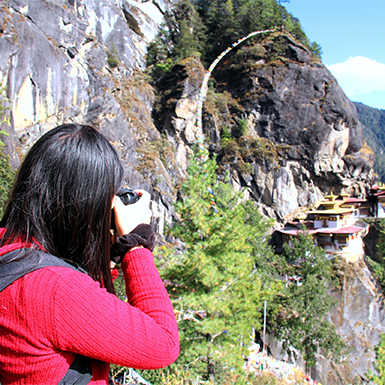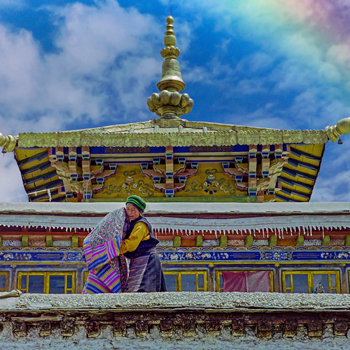The Jokhang Temple is a mesmerizing landmark in the holy city of Lhasa, China. With a history stretching back to the 7th century, when King Songtsen Gampo built it, it is a beloved repository of Tibetan Buddhism. Over the centuries, its grandeur has grown, becoming a central pilgrimage point for Buddhists worldwide.
It is truly the spiritual heart of Tibet, renowned for its traditional ceremonies, awe-inspiring architecture, and magnificent art. This blog post will delve into this spectacular temple, uncovering its journey from its earliest days to the present day.
Location of Jokhang Temple
The famed Jokhang Temple, otherwise known as the “spiritual heart of the city,” stands in the center of the bustling metropolis of Lhasa and is the most sacred temple in Tibet. It’s surrounded by a vibrant market known as Barkhor Square, where visitors can take a pilgrim’s walkway that takes around 20 minutes to traverse. The temple is 1,000 meters (3,300 ft) east of the Potala Palace and is marked by four stone sinking (incense burners) – two in the front and two in the back.
Most Tibetans consider the Jokhang Temple, located in Barkhor Square in the heart of Lhasa, the holiest and most significant temple in all of Tibet. This temple, established by the Tibetan Empire’s namesake ruler Songtsän Gampo, is a fusion of Indian vihara and Chinese Tang Dynasty styles with Nepalese influences.
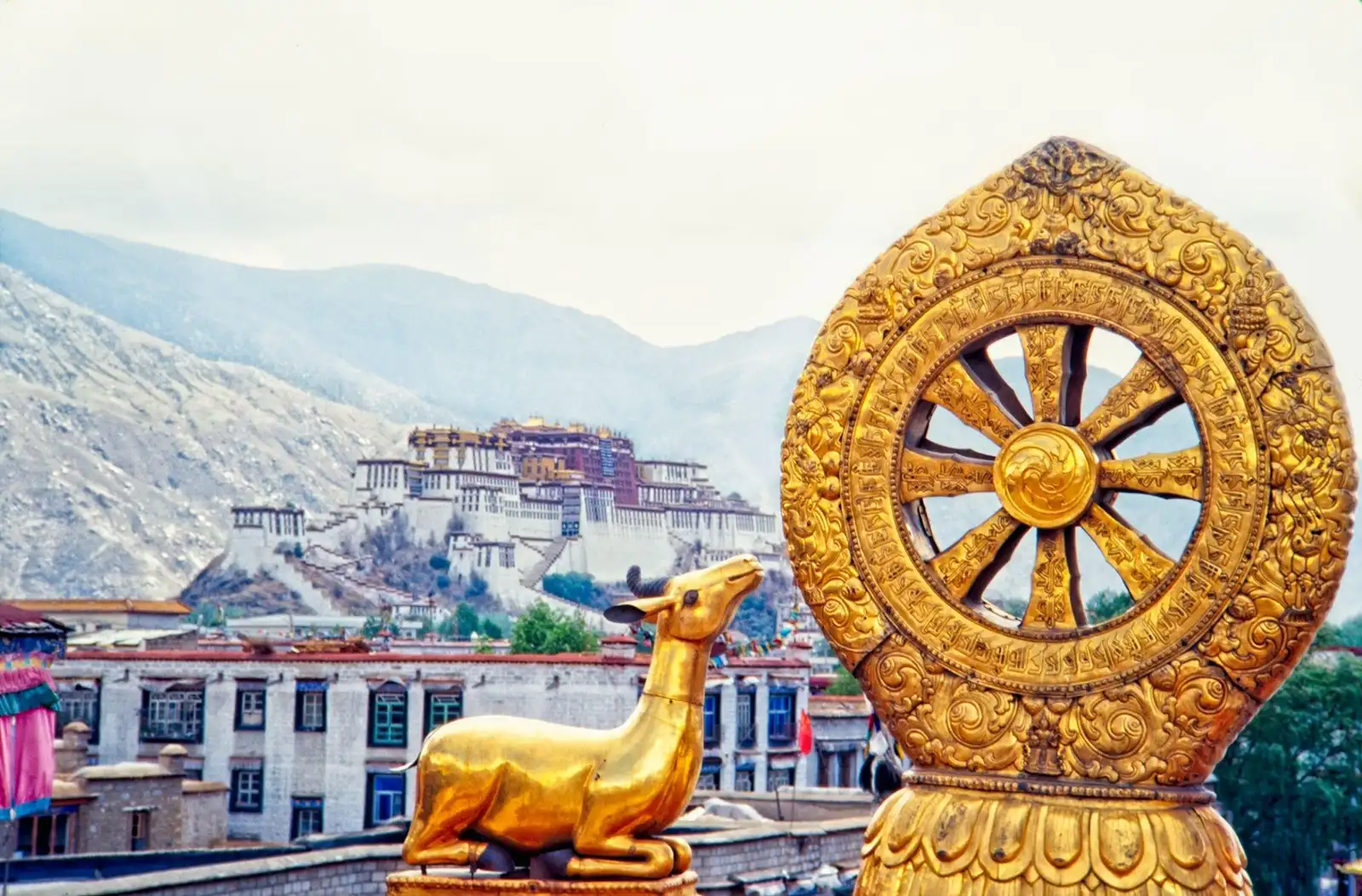
History
The grand temple was built in the mid-7th century by the 33rd Tibetan king, Songtsan Gampo. He intended to create a stunning religious center to house the statues of Buddha gifted to him and his two foreign brides (Princess Wencheng of the Chinese Tang dynasty and Princess Bhrikuti of Nepal) by their fathers as part of their marriage agreements.
This was a remarkable feat for its time – the building of a temple to honor the unions of these three people and the symbolism of their shared spiritual journey. The temple was a true testimony to the strength of love and its ability to unite disparate people in a shared place of worship.
The intricate carvings and artwork that adorned the walls spoke to the strength of their bond – the intertwining of cultures and creeds, the coming together of two people in love, and the devotion of their subjects to their leader.
Historical and Cultural Significance of Jokhang Temple
The Jokhang temple is a powerful reminder of the immense importance of Tibetan history and culture, having been a landmark for centuries. From the coronation of the first Dalai Lama in 1642 to the signing of the 17-Point Agreement of 1951, this sacred site has witnessed some of the most significant moments in Tibetan history.
Despite foreign rule, the Jokhang temple remains an enduring symbol of resilience and hope for the future. It has been a source of strength and guidance during political upheaval, a gathering place for pilgrims and worshippers, and a haven for preserving Tibetan culture, art, and tradition. It stands as a reminder of the resilience of the Tibetan people and the power of faith and perseverance.
Additionally, the temple is a place of immense cultural importance in Tibet and beyond. Jokhang Temple is home to the sacred Jowo Shakyamuni Buddha statue, believed to have been brought to Tibet by the Chinese princess Wencheng. This figure is considered the most venerated object in the entire country and is the focal point of the temple.
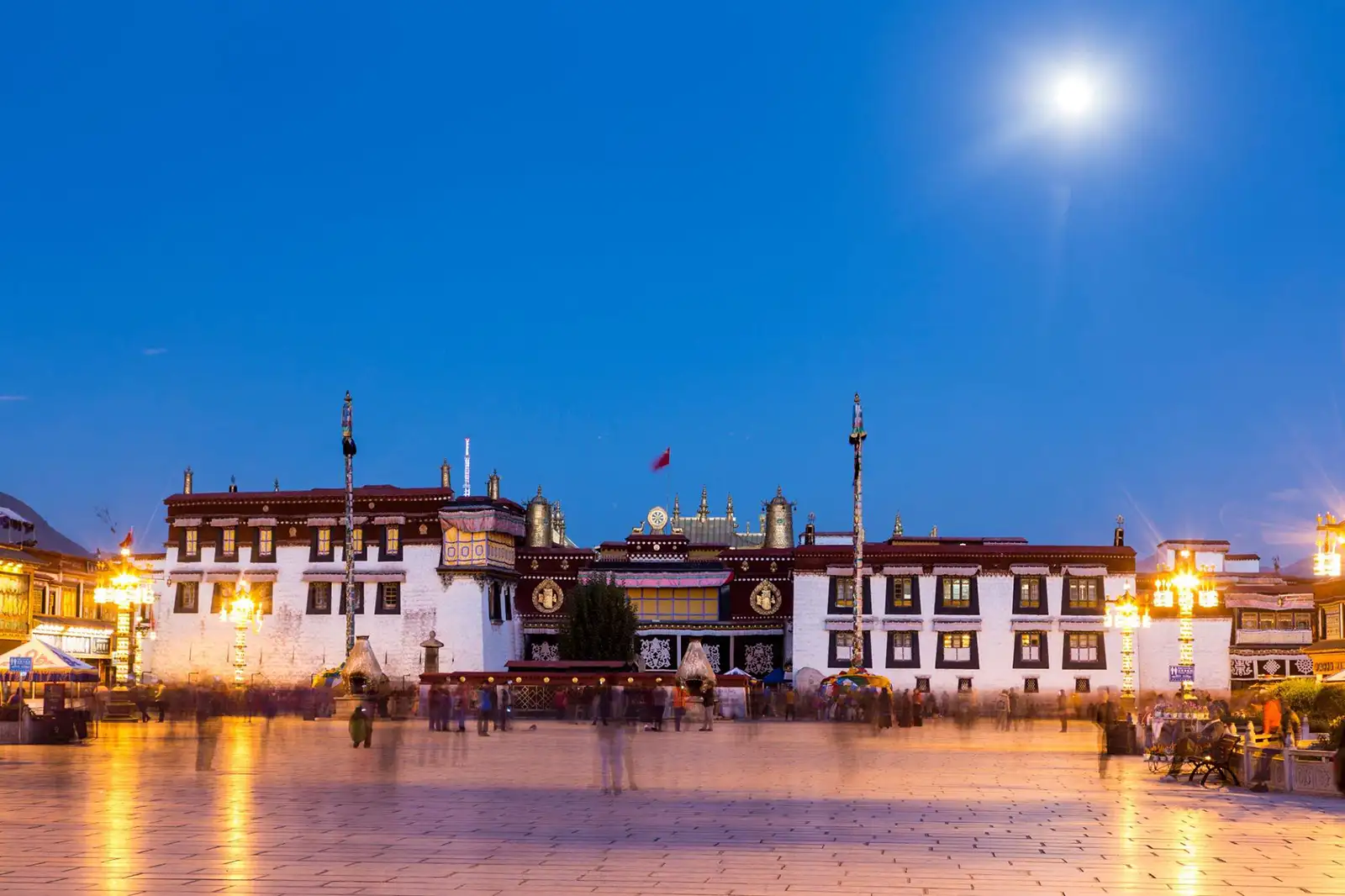
Every year, thousands of Tibetans pilgrimage, known as the “Kora,” to the temple to seek blessings from its powerful deities. The temple is also a significant tourist attraction, with its brilliant gold roofs and intricate sculptures, many centuries old.
As pilgrims and visitors spin the prayer wheels, their wishes are released into the ether, and the Jokhang Temple holds a special place in the hearts of all who experience it. The temple was enlisted as a UNESCO World Heritage Site in 2000 and is one of the oldest surviving structures in Lhasa.
Spiritual Significance
The Jokhang Temple is a fundamental structure for its profound spiritual power. The temple is a symbol of devotion for Buddhists all over the world. It is filled with ancient artifacts and relics, each symbolizing something different for Buddhists. Statues, paintings, and scripts all depict the Four Noble Truths of Buddhism.
These teachings from the Buddha offer insight into the true nature of reality, emphasizing that suffering is inevitable and can be overcome by following a path of wisdom. The temple’s shrines, statues, and paintings purposefully embody these teachings. Visitors can feel a sense of stillness and serenity as they take in the beauty and learn more about the core of Buddhism.
Architecture and Design
The Jokhang Temple, spanning 25,000 hectares, stands majestically in its east-west orientation, proudly overlooking the nation of Nepal in tribute to Princess Bhrikuti. Its entrance looms west, flanked by four Guardian Kings, inviting all to enter its halls.
The interior is a feat of intricate and exquisite architecture, a fusion of Tibetan Buddhist, Chinese, Indian, and Nepalese design. Its walls are decorated with vibrant murals, and its roof has opulent gilded bronze tiles and figures. It is a sanctuary for monks and pilgrims alike, a testament to spiritual devotion.
Its exterior is adorned with deer and wheel motifs, which is a tribute to the Buddha’s first teachings in Deer Park. The crown jewel of the temple is the Jowo Rinpoche, a Jowo Shakyamuni statue depicting the Buddha at 12 years old, considered the holiest object in Tibet.
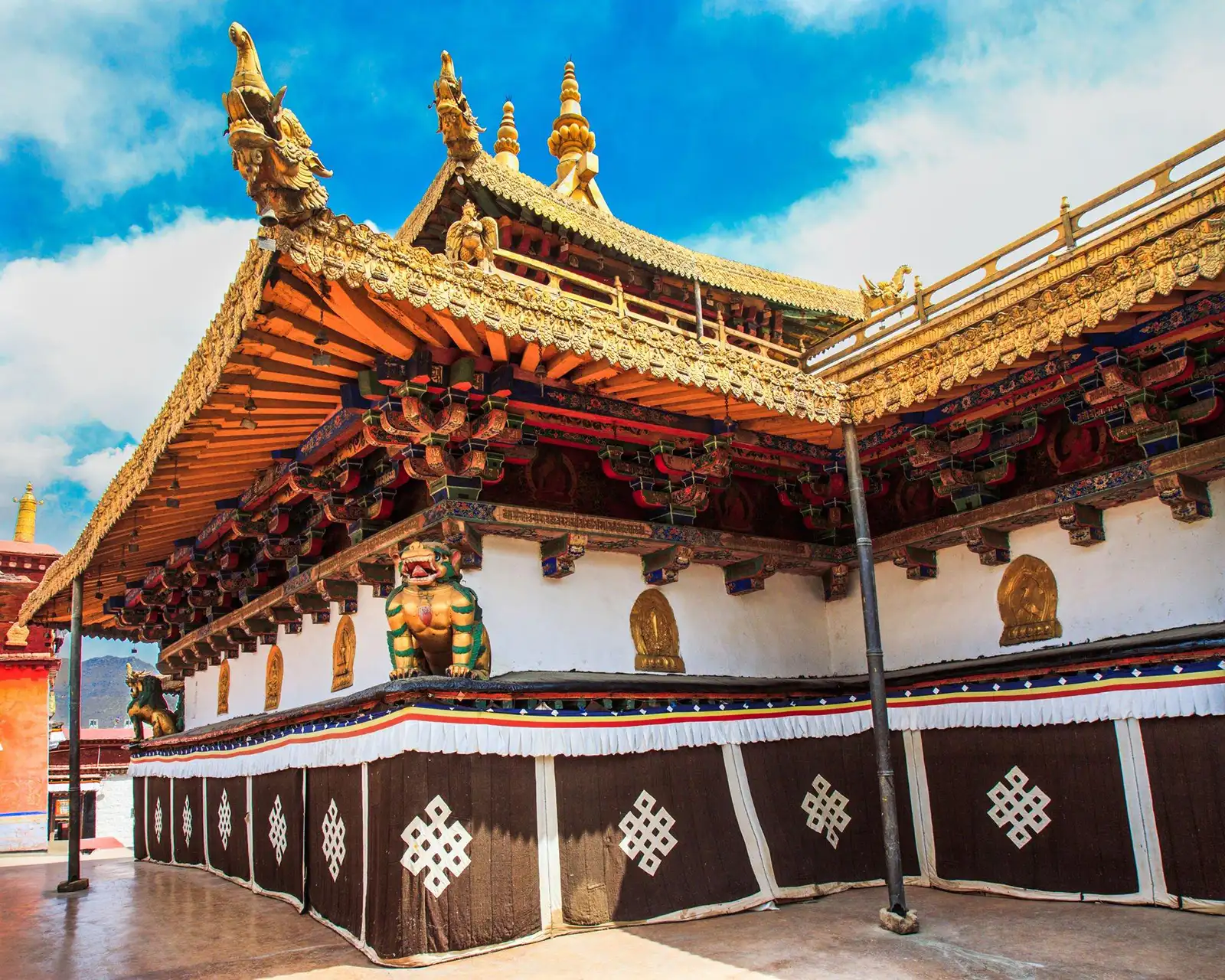
The Jowo Shakyamuni is encircled by various chapels devoted to gods and bodhisattvas. Of these, Avalokiteshwara is the most significant, renowned as the patron saint of Tibet with its thousand eyes and arms. Jokhang Temple’s third floor provides a sacred place to view the image of Palden Lhamo, the feared guardian of the Dalai Lama.
A majestic view of golden deer, Dharma wheel, jubilant flags, and a colossal fish is presented from the dizzying heights of rooftops and ridges. Further down, a meandering labyrinth of chapels and passages offers a faint glimmer from its burning candles, heavily fragranced with incense.
Although modernization has touched some portions of the temple, its obsolete components remain. Carbon dating affirms the wooden beams and rafters to be from the original era. The Newari door frames, columns, and finials, which have been around since the seventh and eighth centuries, were imported from the Kathmandu Valley in Nepal.
Rituals, Ceremonies, and Festivals
Jokhang temple is considered one of the most sacred temples in Tibet and has been a primary pilgrimage site for centuries. Within the temple, numerous rituals, ceremonies, and festivals are celebrated throughout the year. The most famous ritual is the circumambulation of the temple.
Pilgrims from all over Tibet and beyond come to Jokhang Temple to circumambulate the temple in a clockwise direction. This ritual is done to show respect for the temple and to gain blessings from the deities that it houses.
In addition to circumambulation, several other ceremonies and festivals occur at Jokhang Temple throughout the year. During the Tibetan New Year, Lhosar, the temple is filled with people who come to offer their prayers and blessings. The Butter Lamp Festival is also celebrated at Jokhang Temple, during which thousands of butter lamps are lit around the temple as a symbol of spiritual enlightenment.
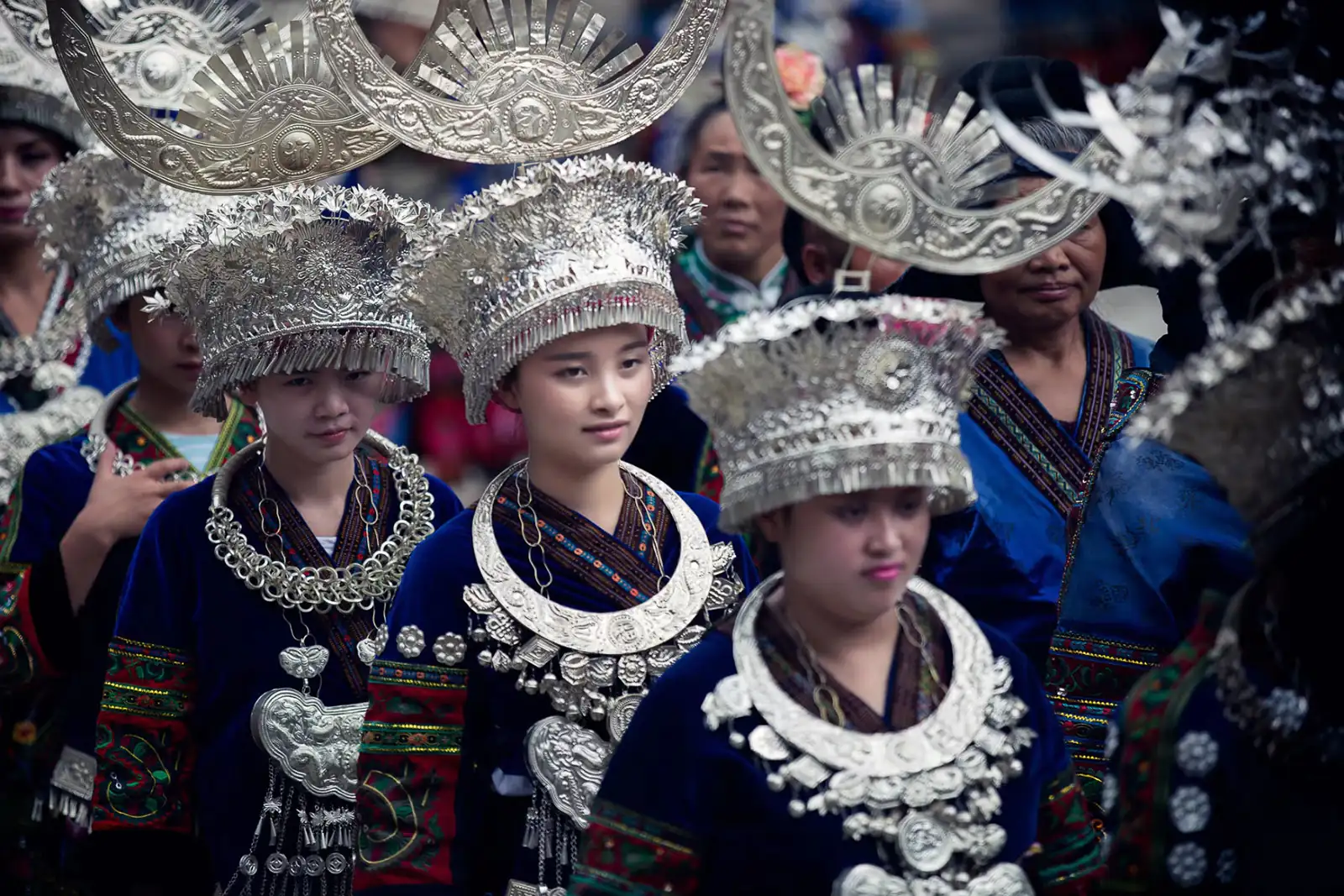
Additionally, many Tibetan Buddhist pilgrims from all over the world visit Jokhang Temple to take part in the Buddhist teachings of the Fourth Dalai Lama, which are held annually in the temple. Furthermore, the annual Great Prayer Festival, or Monlam Chenmo, is widely celebrated at Jokhang Temple and features a range of religious activities and rituals.
The festival lasts two weeks, during which pilgrims participate in chants, prayers, and offerings. The celebration’s highlight is the symbolic Grand Circumambulation of Jokhang Temple, wherein the devotees circumambulate the temple and make offerings to the Buddha. The entire procession is usually accompanied by singing and chanting of prayers.
Reason to Visit Jokhang Temple
Embark on an unforgettable journey to Jokhang Temple to witness its remarkable beauty and learn about its fascinating history. From its traditional architecture to its intricate statues and breathtaking artwork, the Jokhang Temple is full of beauty that captivates the spirit and soul. Step into the past and explore its many chambers, each containing its unique history.
Feel the energy of this sacred place as you walk around and admire its many features. Let yourself be immersed in its serene atmosphere and its captivating beauty. Experience this site’s spiritual significance and appreciate its importance as a symbol of Tibetan culture and faith.
Conclusion
The Jokhang temple is a testament to the importance of Buddhism in Tibet and its history. It is a place full of spiritual and cultural significance, and its art and architecture reveal Tibet’s rich history and cultural traditions. The temple is a must-visit for anyone interested in Tibetan culture and Buddhism and is a great way to experience a piece of Tibet’s past.

